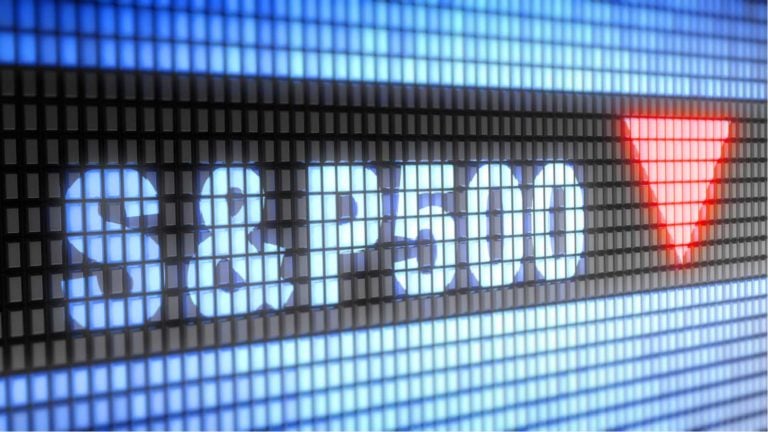The Magnificent 7 have lost $1.11 trillion in market capitalization over the past five trading days as investors rotate away from them. Some of the capital moving away has likely gone into other, less overvalued S&P 500 stocks.
“From the perspective of the Mag 7 names, we do see the potential for further declines over the near term without disrupting the uptrend that has been in place since early 2024,” MarketWatch reported Janney strategist Dan Wantrobski’s comments to clients on July 17.
If you’re looking to buy S&P 500 stocks in July that aren’t the Mag 7, a good place to start would be sectors that appear undervalued. Looking at Finviz.com, of the 20 S&P 500 stocks with the lowest price-to-sales ratios, seven are healthcare stocks, followed by four from the consumer defensive sector and three from the energy sector.
Let’s examine one stock from each of the three sectors to buy in July.
Centene (CNC)

Centene (NYSE:CNC) is a provider of government-sponsored health insurance plans such as Medicaid, Medicare and the Health Insurance Marketplace. It had 27.5 million members at the end of December, nearly one in 15 people nationwide.
In Q1 of fiscal year 2024, its revenues were $40.41 billion, 3.9% higher than a year ago, with a 7.1% increase in adjusted earnings per share, to $2.26.
The big revenue growth was from its Commercial business, which includes the Health Insurance Marketplace. The business saw a 48% increase in revenue to $7.75 billion, or 21% of its $36.34 billion in premium and services revenue. That was offset by a 3% decline in its Medicaid business, which accounted for 59% of its premium and services revenue.
Based on its adjusted EPS estimate for 2024 of $6.80 a share, it trades at a reasonable 10.0x the estimate. That’s 17% less than its five-year average of 11.99x. Its current P/S ratio is 0.24x, 25% less than its five-year average of 0.32x.
Bunge Global (BG)

Bunge Global (NYSE:BG) is the world’s leading oilseed processor and producer and supplier of specialty plant-based oils and fats. Based in St. Louis, it has 23,000 employees working at approximately 300 facilities in 40 countries. Competitors include Archer Daniels Midland (NYSE:ADM) and Cargill.
Although its current P/S ratio is 0.29x, higher than its five-year average of 0.22x, several key metrics are showing some value.
Its enterprise value is $19.51 billion, 5.73x EBITDA, less than its five-year average of 6.87x. Moreover, its earnings yield (the inverse of P/E) is 11.13%, 53 basis points higher than its five-year average.
Of the 11 analysts that cover its stock, eight rate it a buy, with a target price of $121.72, higher than its current trading price.
In April, Bunge named the leadership team to run the combined entity once it completes its $8.2 billion cash-and-stock acquisition (plus the assumption of $9.8 billion in debt) of Viterra, a competitor in the grain trade. Bunge shareholders will own 67% and Viterra shareholders the rest. Bunge Chief Executive Officer (CEO) Greg Heckman will lead.
However, it continues to face regulatory scrutiny in North America and Europe. Originally scheduled to be completed in mid-2024, it’s likely to carry into the fall or winter.
Once the uncertainty clears and the deal is approved, BG stock should be trading in the $120s, perhaps higher.
Valero Energy (VLO)

Based in San Antonio, Texas, Valero Energy (NYSE:VLO) is the world’s largest independent petroleum refiner. Moreover, it is one of the world’s largest producers of low-carbon transportation fuels like corn ethanol and renewable diesel.
It has 15 refineries in the U.S., Canada and the U.K. with a capacity to refine 3.2 million barrels per day (bpd).
The company is shareholder friendly, returning $12.9 billion to shareholders in the past two years from dividends ($3.1 billion) and share repurchases ($9.8 billion). Since 2012, it has increased its dividend by 17% annually from $0.65 to $4.28 a share in 2023. As for its share repurchases since 2012, it’s bought back 225 million of its shares, ruding its share count by 41%.
As for free cash flow, its average trailing 12-month (TTM) free cash flow (FCF) between 2012 and 2023 is $3.53 billion, or approximately 10% of its market cap, higher than virtually every S&P 500 sector.
Based on TTM FCF of $7.06 billion as of March 31 and an enterprise value of $57.78 billion, it has a FCF yield of 12.3%. Anything above 8% is in value territory.
It’s not surprising that it’s got a 15-year annualized total return of 17.11%, higher than both its Oil & Gas Refining & Marketing peer group, and the U.S. markets as a whole.
On the date of publication, Will Ashworth did not have (either directly or indirectly) any positions in the securities mentioned in this article. The opinions expressed in this article are those of the writer, subject to the InvestorPlace.com Publishing Guidelines.
On the date of publication, the responsible editor did not have (either directly or indirectly) any positions in the securities mentioned in this article.
